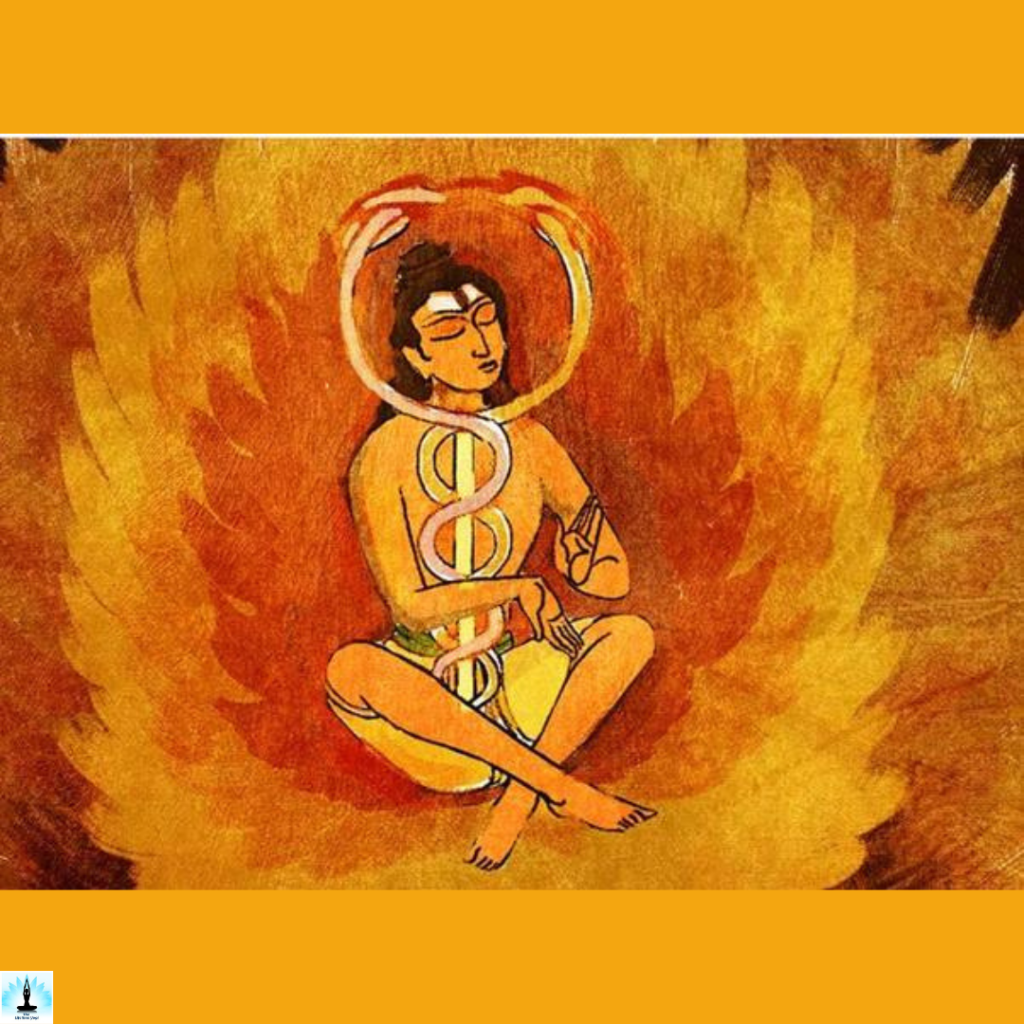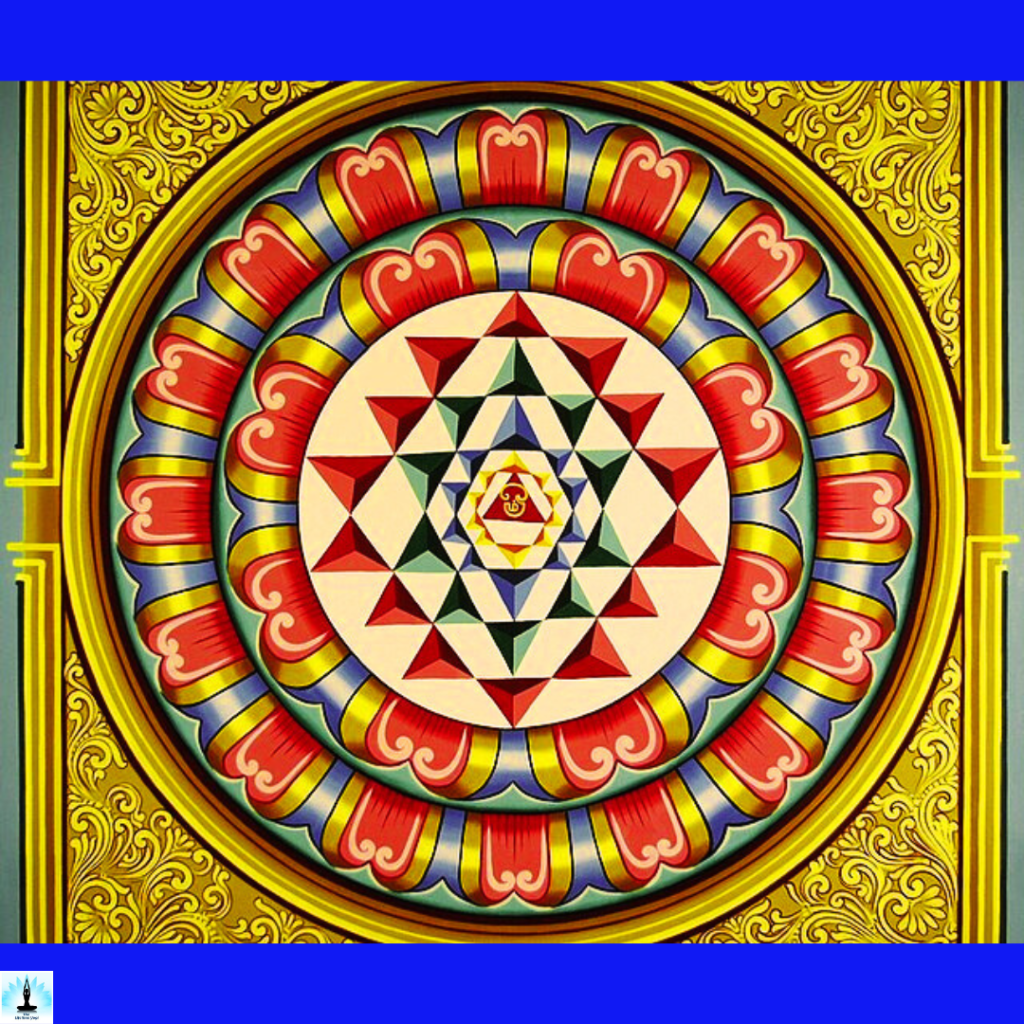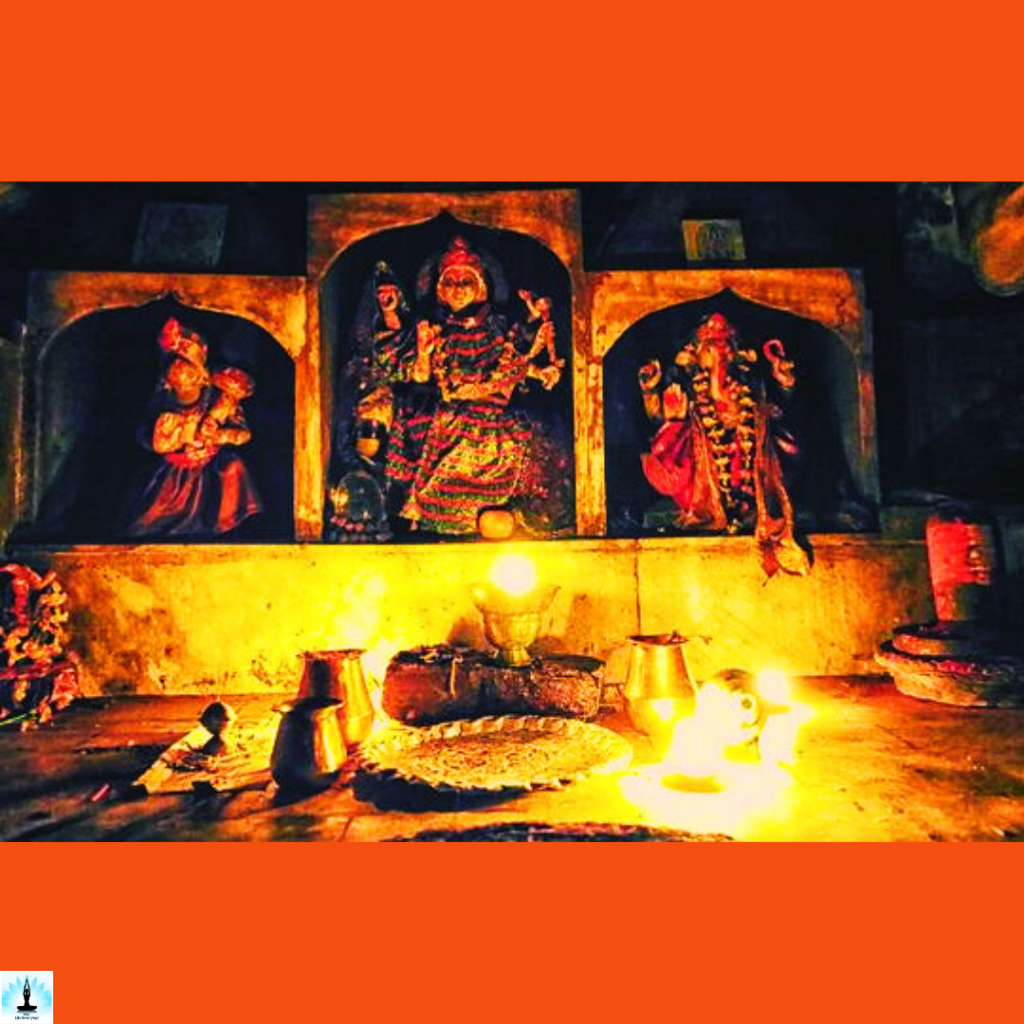Introduction – How to Attain Moksha? Practical Steps Towards Attaining Moksha in Tantra Yoga?
The quest for liberation, often referred to as “Moksha” or “Mukti,” has been a central pursuit in various spiritual traditions for centuries. Among these, Tantra Yoga offers a unique and profound perspective on the path to attaining Moksha. In this blog, we will explore how Tantra Yoga defines Moksha and Mukti, and delve into the practices and principles that guide seekers on their journey to ultimate liberation.
Table of Contents
Understanding Moksha in Tantra Yoga
In Tantra Yoga, Moksha is the culmination of spiritual evolution—a state of supreme liberation that transcends the cycle of birth and death. Unlike some other yogic paths that advocate detachment from the material world.

Tantra embraces the idea of embracing life fully while progressing spiritually. Tantra recognizes that the human experience, including desires and emotions, can be avenues for transformation when channeled with awareness and discipline.
Key Principles of Tantra Yoga for Attaining Moksha
Integration of Polarities:
Tantra teaches that everything in existence has both masculine (Shiva) and feminine (Shakti) aspects. Moksha is achieved through the harmonization and integration of these polarities within oneself. This involves recognizing and transcending dualities, leading to a state of unity and oneness.
Awakening Kundalini:
Central to Tantra Yoga is the concept of Kundalini energy, often depicted as a coiled serpent at the base of the spine. Through various practices such as breathwork, meditation, and specific yogic postures, practitioners aim to awaken and guide this powerful energy up the spine, leading to heightened awareness and spiritual growth.
Sacred Rituals and Symbolism:
Tantra employs rituals, mantras, and sacred symbols to invoke spiritual energies and states of consciousness. These practices help transcend the limitations of the ego and connect with deeper layers of existence.
Sublimation of Desires:
Rather than renouncing desires, Tantra Yoga suggests redirecting them towards spiritual growth. By sublimating desires and cultivating awareness, one can transform mundane experiences into opportunities for self-realization.
Union of Shiva and Shakti:
Tantra emphasizes the union of Shiva (consciousness) and Shakti (creative energy). The integration of these forces leads to an experience of non-duality, where the practitioner realizes their innate divinity and interconnectedness with all of existence.
What Are The 7 Cities of Moksha in India?

The concept of the “Seven Cities of Moksha” holds significant importance in certain Hindu traditions, particularly in relation to the spiritual journey and the pursuit of liberation. These cities are believed to possess special spiritual significance and are often associated with pilgrimage and seeking enlightenment. The specific list of these cities may vary among different sources and interpretations, but some of the commonly mentioned cities include:
- Ayodhya: Ayodhya is known as the birthplace of Lord Rama and holds immense spiritual significance in Hinduism. It symbolizes righteousness and devotion.
- Mathura: Mathura is closely associated with the birth of Lord Krishna. It represents divine love and the pursuit of self-realization.
- Haridwar: Located on the banks of the Ganges River, Haridwar is a renowned pilgrimage destination. It is believed that taking a dip in the holy Ganges here can cleanse one’s sins and aid spiritual progress.
- Kashi (Varanasi): Varanasi, also known as Kashi, is considered one of the oldest and holiest cities in India. It is believed that attaining liberation in Varanasi ensures freedom from the cycle of birth and death.
- Kanchipuram: Kanchipuram is known for its rich history and cultural heritage. It is associated with spiritual wisdom and is considered a city of learning and devotion.
- Avantika (Ujjain): Ujjain is one of the seven sacred cities in Hinduism, and it hosts the Kumbh Mela, a major pilgrimage and cultural event. It represents spiritual awakening and transformation.
- Dvaraka: Dvaraka is associated with Lord Krishna and is believed to have been his kingdom. It embodies devotion, surrender, and divine love.
The concept of the “Seven Cities of Moksha” might differ in various traditions and interpretations. These cities are considered sacred because of their connection to key figures and events in Hindu mythology, and they are often visited by pilgrims seeking spiritual growth and eventual liberation.
The Path to Mukti in Tantra Yoga
In Tantra, “Mukti” refers to liberation attained through the realization of the unity of all things. This realization goes beyond intellectual understanding; it’s an experiential awareness that every aspect of existence is an expression of the divine. Tantra practices guide practitioners toward this realization, allowing them to transcend the limitations of the ego and access higher states of consciousness.
Practical Steps Towards Attaining Moksha

- Self-Exploration: Begin by understanding your desires, motivations, and fears. This self-awareness lays the foundation for transformation.
- Kundalini Activation: Engage in practices that awaken and guide the Kundalini energy, such as pranayama (breath control), meditation, and specialized yoga postures.
- Rituals and Mantras: Incorporate sacred rituals and mantras into your practice to channel higher energies and expand your consciousness.
- Mindful Living: Practice mindfulness in all aspects of life. Approach each experience with presence and awareness, transforming routine activities into opportunities for spiritual growth.
- Inner Union: Recognize the divine masculine and feminine aspects within yourself. Cultivate a sense of inner harmony and balance.
What Do the Bhagavad Gita and Upanishads Say About Moksha?
The Bhagavad Gita and Upanishads, a collection of ancient philosophical texts that form the core teachings of Hinduism, provide profound insights into the concept of Moksha. These texts explore the nature of reality, the self, and the path to liberation in depth. Here are some key themes from the Upanishads regarding Moksha:

Nature of the Self (Atman):
The Upanishads assert that the individual self (Atman) is eternal, beyond the physical body, and interconnected with the ultimate reality (Brahman). Realizing this fundamental unity is a central aspect of attaining Moksha.
Ignorance and Liberation:
The Upanishads highlight that ignorance (avidya) is the root cause of suffering and the cycle of birth and death (samsara). Knowledge (vidya) is the means to dispel ignorance and attain liberation.
Jnana Yoga (Path of Knowledge):
Many Upanishads emphasize the importance of knowledge and wisdom in the journey to Moksha. Through introspection, self-inquiry, and understanding the nature of reality, individuals can transcend the illusion of separateness.
Detachment and Renunciation:
Renouncing attachments to material possessions and transient desires is seen as a crucial step toward liberation. This detachment leads to a state of inner peace and freedom from worldly entanglements.
Meditation and Self-Realization:
The Upanishads teach that meditation and contemplation are powerful tools for realizing the true nature of the self and experiencing union with the divine. This direct experience of reality is a gateway to Moksha.
Unity of All Existence:
The Upanishads stress the interconnectedness of all beings and the universe. Realizing this interconnectedness leads to a sense of oneness and liberation from the illusion of separateness.
What Is the Highest Form of Moksha?
The concept of the “highest form of Moksha” can vary among different philosophical and spiritual traditions within Hinduism. While Moksha itself represents the ultimate liberation from the cycle of birth and death (samsara), there are different perspectives on the nature and realization of this state. One commonly discussed aspect is the idea of “Sayujya Mukti,” which is often considered the highest form of Moksha in some philosophical frameworks.
Sayujya Mukti: Sayujya Mukti, also known as “Salokya Mukti,” refers to a state of liberation where the individual soul (Atman) merges or becomes one with the ultimate reality, Brahman. In this state, the distinction between the individual self and the cosmic self dissolves completely.
The soul becomes indistinguishable from the divine, and there is an experience of total union. This concept is closely associated with the philosophy of Advaita Vedanta, which teaches the non-dual nature of reality.
What Are the Stages of Moksha?
The concept of stages on the path to Moksha can vary among different spiritual traditions and philosophical perspectives within Hinduism. While there isn’t a universally defined set of stages, some interpretations and teachings offer insights into the progressive journey toward liberation. Here’s a general overview of the stages that are often discussed:

Awakening (Jnana):
The journey begins with the awakening of self-awareness and a desire for deeper understanding. Seekers start questioning the nature of reality, the purpose of life, and their own identity beyond the physical body.
Self-Inquiry (Vichara):
In this stage, individuals engage in intense self-inquiry and introspection. They examine their thoughts, emotions, and beliefs to uncover the true nature of the self and the illusions that bind them.
Detachment (Vairagya):
Detachment from worldly attachments and desires becomes a crucial step. This includes letting go of material possessions, ego-driven desires, and identification with the physical body.
Study of Scriptures (Shravana and Manana):
Seekers delve into the teachings of spiritual texts, scriptures, and the wisdom of enlightened beings. They contemplate the teachings to deepen their understanding and challenge existing beliefs.
Meditation (Dhyana):
Meditation becomes a central practice. Through sustained meditation, individuals seek to quiet the mind, experience moments of inner stillness, and connect with higher states of consciousness.
Direct Experience (Anubhava):
Seekers begin to have glimpses or direct experiences of higher states of consciousness, unity, and interconnectedness. These experiences reinforce the understanding that the true self is beyond the limitations of the ego.
Self-Realization (Atma-Gyan):
The individual experiences a profound shift in identity. They realize the eternal nature of the self (Atman) and its connection to the ultimate reality (Brahman). This realization marks a significant step toward Moksha.
What Are the Types of Mukti?
Within Hindu philosophy, the concept of “Mukti” refers to liberation from the cycle of birth and death (samsara) and realization of one’s true nature. Different spiritual traditions and philosophies describe various types of Mukti, each emphasizing distinct aspects of spiritual realization and union with the divine. Here are some commonly discussed types of Mukti:
Salokya Mukti:
This type of Mukti involves residing in the same world as the divine. In Salokya Mukti, the liberated individual lives in proximity to the divine, often in the realm of a particular deity.
Samipya Mukti:
Samipya Mukti refers to a state of being in close proximity to the divine. The liberated individual enjoys a special relationship with the divine and experiences a sense of nearness.
Sarupya Mukti:
In Sarupya Mukti, the liberated soul shares a similar form or appearance with the chosen deity. This type of Mukti symbolizes a deep connection and identification with the divine.
Sayujya Mukti:
Also known as “Union with Brahman,” Sayujya Mukti is a state where the individual soul (Atman) merges completely with the ultimate reality (Brahman). This represents the highest form of liberation, where the distinction between the self and the divine dissolves.
Nitya Mukti:
Nitya Mukti is eternal liberation, where the soul remains in a constant state of liberation, free from the cycle of birth and death. This type of Mukti signifies the permanent realization of one’s true nature.
Advaita Mukti:
Advaita Mukti refers to non-dual liberation. It signifies the realization that the individual self (Atman) and the ultimate reality (Brahman) are fundamentally the same, and there is no inherent separation.
Kaivalya Mukti:
Kaivalya Mukti represents a state of absolute independence and isolation. In this type of Mukti, the liberated soul experiences complete isolation from all other beings and realities.
Aikya Mukti:
Aikya Mukti denotes a state of oneness. The liberated individual experiences a profound sense of unity with the divine and all of creation.
Jivanmukti:
Jivanmukti is the concept of attaining liberation while still living in the physical body. A Jivanmukta, or liberated soul, is free from the cycle of birth and death while continuing to live and interact in the world.
FAQs on How to Attain Moksha? Practical Steps Towards Attaining Moksha in Tantra Yoga?
What Is the Definition of Mukti and Moksha in The Shashtras?
In the shastras, Mukti and Moksha are terms used interchangeably to signify the ultimate liberation from the cycle of birth and death (samsara). They denote the state of realizing one’s true nature and breaking free from the limitations of the material world.
Is Moksha the Same as Mukti?
Yes, Moksha and Mukti are essentially the same concept, both signifying the state of spiritual liberation and freedom from the cycle of reincarnation.
How Can I Get Mukti or Moksha?
Attaining Mukti or Moksha requires dedicated spiritual practice, self-realization, and inner transformation. Different paths, such as Karma Yoga (selfless action), Bhakti Yoga (devotion), Jnana Yoga (knowledge), and Raja Yoga (meditation), offer ways to reach this goal.
What Defines the Path to Moksha?
The path to Moksha involves self-discovery, understanding the nature of reality, and transcending the ego. It often includes practices like meditation, selfless service, introspection, and cultivating detachment from worldly attachments.
Which Karma Leads to Moksha?
The concept of Karma Yoga, the yoga of selfless action, teaches that performing duties without attachment to outcomes can lead to spiritual growth and ultimately contribute to attaining Moksha.
Is Moksha Permanent?
Yes, Moksha is considered a permanent state of liberation. Once an individual attains Moksha, they are believed to be free from the cycle of birth and death.
How Do You Know When You’ve Achieved Moksha?
Attaining Moksha is a profound inner realization. It involves experiencing a state of pure consciousness, transcending duality, and realizing oneness with the divine.
What Happens After Mukti?
After attaining Mukti or Moksha, an individual is believed to merge with the divine or achieve union with the ultimate reality. The specifics can vary based on different philosophical interpretations.
How Many Lifetimes Does It Take to Achieve Moksha?
The number of lifetimes required to attain Moksha is not fixed and can vary widely depending on an individual’s spiritual progress and karmic journey.
Does Everyone Attain Moksha?
According to Hindu philosophy, the goal of human life is to attain Moksha, but not everyone may achieve it in a given lifetime. Spiritual progress occurs over multiple lifetimes.
What Is the Nature of Mukti?
Mukti is the state of liberation where the individual soul transcends the cycle of samsara and realizes its inherent connection with the divine or ultimate reality.
Conclusion
Tantra Yoga’s approach to Moksha is a dynamic and all-encompassing journey that embraces the full spectrum of human experience. It invites practitioners to channel their desires, energies, and emotions toward spiritual growth and self-realization. By integrating polarities, awakening Kundalini, and experiencing the union of consciousness and creative energy, seekers embark on a transformative path that ultimately leads to liberation and freedom—both within and beyond the confines of the ego.
References
- H. Negendra (2008), Int Journal of Yoga, Jul–Dec, 1(2), pp 43–44
- Eliot Deutsch, Advaita Vedanta: A philosophical reconstruction, University of Hawaii Press, ISBN 978-0824802714, pp 104–106
- ^ (Sarma 1966, pp. 41–42)
- ^ Shankara, Sarva vedanta siddhantasara 230–239
- ^ Mishra, R.C (2013). Moksha and the Hindu Worldview. New Delhi, India: SAGE Publications. p. 27.
- ^ D. Datta (1888), Moksha, or the Vedántic Release, Journal of the Royal Asiatic Society of Great Britain and Ireland, New Series, Vol. 20, No. 4 (Oct., 1888), pp. 516
- ^ Brodd, Jeffrey (2003). World Religions. Winona, MN: Saint Mary’s Press. ISBN 978-0-88489-725-5.
- ^ Sugirtharajah 2003, p. 115.
- ^ “Sat-Cit-Ananda Eternity Knowledged and Bliss, Kala Material Time, Form”. ISKCON Desire Tree | IDT. 8 March 2010. Retrieved 3 November 2020.
- ^ Jump up to:a b c “Sanskrit Dictionary, chit“. Archived from the original on 10 May 2013. Retrieved 3 January 2019.
- ^ Anantanand Rambachan, The limits of scripture: Vivekananda’s reinterpretation of the Vedas University of Hawaii Press, 1994, pages 124–125
- ^ Karl Potter (2008), The Encyclopedia of Indian Philosophies: Advaita Vedānta Up to Śaṃkara and His Pupils, Volume 3, Delhi: Motilal Banarsidass, pp 210–215
- ^ Karl Potter (2008), The Encyclopedia of Indian Philosophies: Advaita Vedānta Up to Śaṃkara and His Pupils, Volume 3, Delhi: Motilal Banarsidass, pp 213
- ^ Betty, Stafford. “Dvaita, Advaita, And Viśiṣṭadvaita: Contrasting Views Of Mokṣa.” Asian Philosophy 20.2 (2010): 215–224. Academic Search Elite. Web. 24 Sept. 2012.
- ^ N.S.S. Raman (2009), Ethics in Bhakti Philosophical Literature, in R. Prasad – A Historical-developmental Study of Classical Indian Philosophy of Morals, ISBN 978-8180695957, Chapter 19
- ^ Abha Singh (October 2001), Social Philosophy of Ramanuja: its modern relevance, Indian Philosophical Quarterly, Vol. 28, No. 4, pp 491–498
